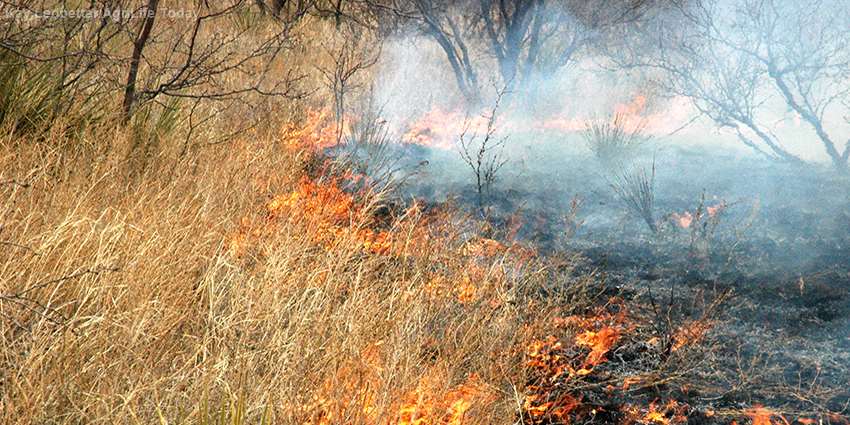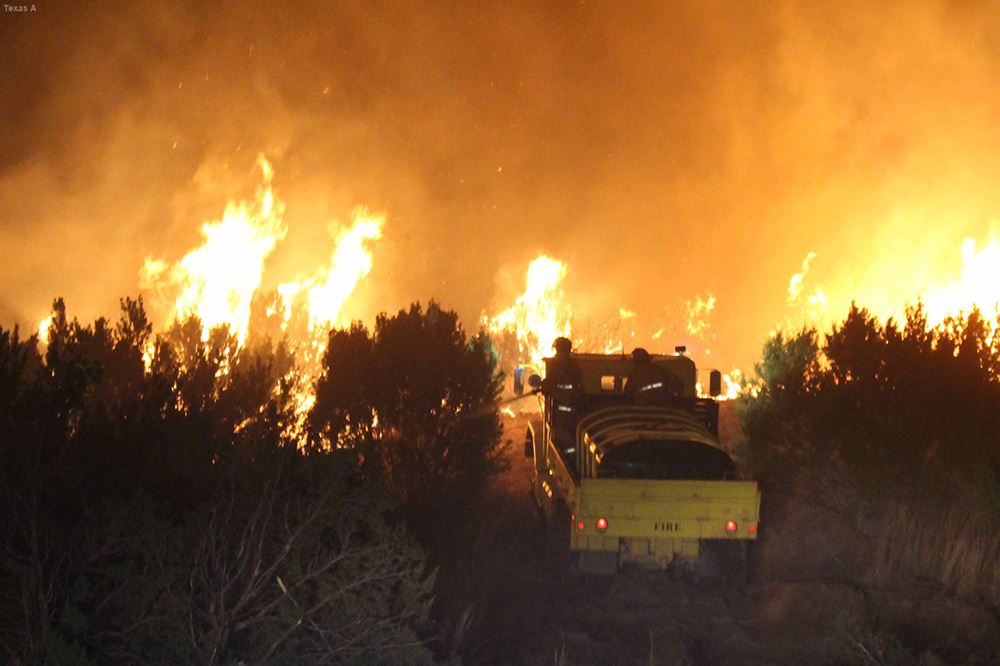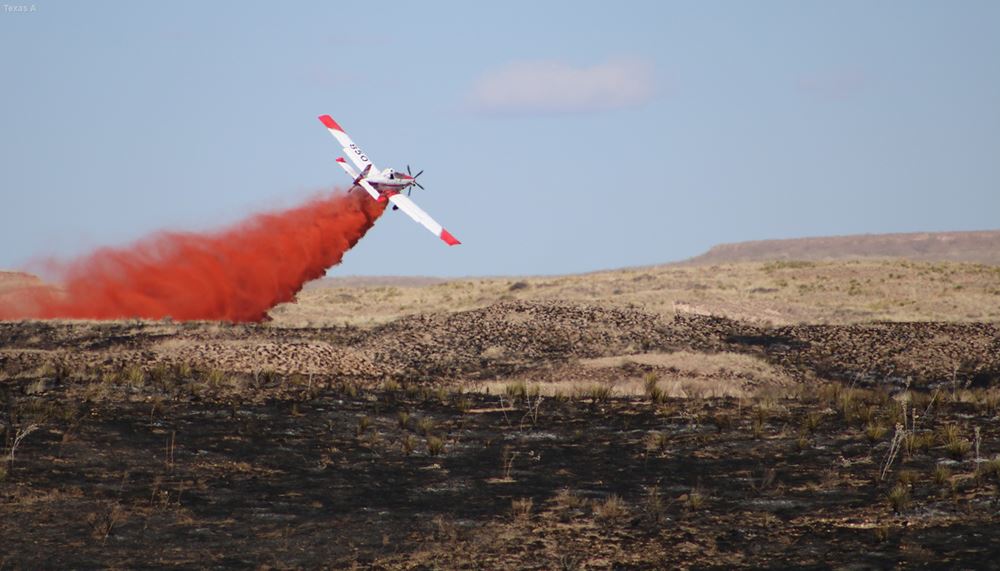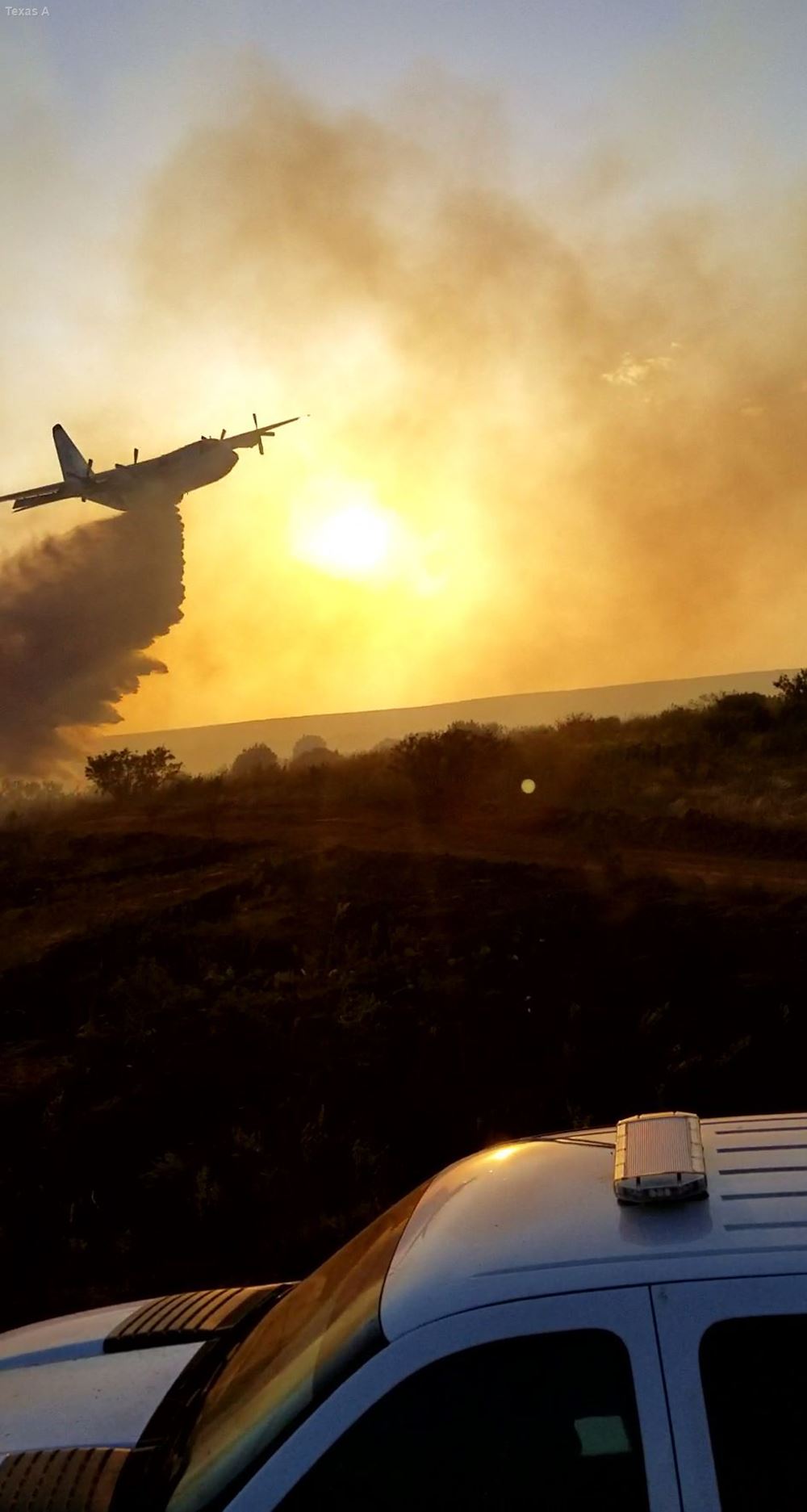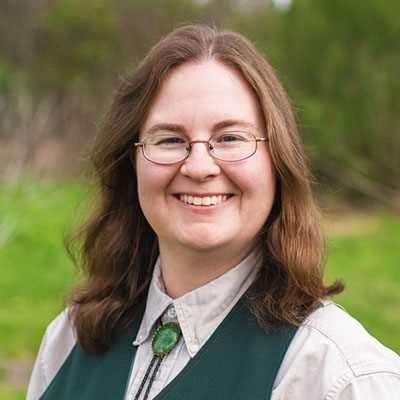Texas’ winter/spring wildfire season is about to begin. Fire experts predict it could be a particularly active season due in large part to the presence of La Niña this year. The weather pattern often brings drier, warmer weather, and strong winds: the perfect recipe for fire.
“Mid-February through mid-April is the peak of winter/spring fire season,” said Brad Smith. Smith is the predictive services department head at Texas A&M Forest Service, a division of Texas A&M AgriLife.
“Coincidentally, that lines up with when La Niña presents itself.”
“La Niña” refers to a cyclical weather pattern characterized by drier, warmer conditions. Meteorologists at the National Weather Service’s Climate Prediction Center, CPC, issued a La Niña advisory in November 2020, meaning the conditions were present at the time. The advisory was later extended in January 2021, with predictions the condition will last until around April or May.
Winter fire season in Texas
Wind and brown grass characterize the winter/spring wildfire season in Texas.
“I sometimes call it the dormant season,” Smith said. “We have the cold winter weather that freezes and kills our grasses or sends them into dormancy.”
Winter winds dry already dead or dormant grasses even more, turning them into excellent fuel for wildfires. They also help spread fires once they start.
La Niña takes the conditions that fuel the winter/spring wildfire season and makes them worse. Where Texas winters are normally dry, La Niña brings even less precipitation and warmer temperatures.
Historically, La Niña years have seen more, bigger fires that burn more acres. For example, over 5.7 million acres have burned in Texas since 2005 during the winter/spring seasons in La Niña years. This compares to 280,511 acres burned during non-La Niña years. Texas A&M Forest Service fire experts attribute this to the extended drying and the strength of the weather during La Niña years.
Southern Plains Wildfire Outbreaks
According to Smith, La Niña conditions increase the risk for “high impact fire weather events.” Key among these are Southern Plains Wildfire Outbreaks (SPWOs). Smith described these as situations with strong winds and "a lot of great ingredients for large fires that are very difficult to control.”
He cited records showing that SPWOs account for only 3% of the reported winter/spring wildfires, but 49% of the acres burned.
“These SPWOs over the past 15 years have been the biggest threat to property and public safety,” said Smith. “Because of our experience over the past years with La Niña winter fire seasons, we expect large fires. I think there’s a good chance we will see one, if not more, SPWOs this season as well.”
Texas media meteorologists interested in learning more about SPWOs can attend a free webinar on February 11 at 1pm CDT. Texas A&M Forest Service fire analysts will present the event.
Soil moisture and the end of winter fire season
“Our winter/spring fire season will end when the grass turns green,” said Smith. “When we get warm enough temperatures, and enough precipitation and soil moisture, the grasses will green.”
That usually happens in May in the high plains of Texas, an area that is particularly susceptible to winter/spring fires, under neutral conditions. But La Niña conditions are not neutral. The combination of less precipitation and higher temperatures means soil moisture levels are typically lower for longer during La Niña years. This is the case currently.
According to the U.S. Drought Monitor, soil moisture is currently lower than average for the state. That condition is expected to persist through the end of April at least. Similarly, the CPC projects Texas has a strong to moderate likelihood of seeing above-normal temperatures and a moderate likelihood of seeing below normal precipitation rates in the next three months under La Niña.
“We still have a lot of time to dry out and incur some of these large wildfires.”

